Kostis Gourgoulias
DeepClean: Machine Unlearning on the Cheap by Resetting Privacy Sensitive Weights using the Fisher Diagonal
Nov 17, 2023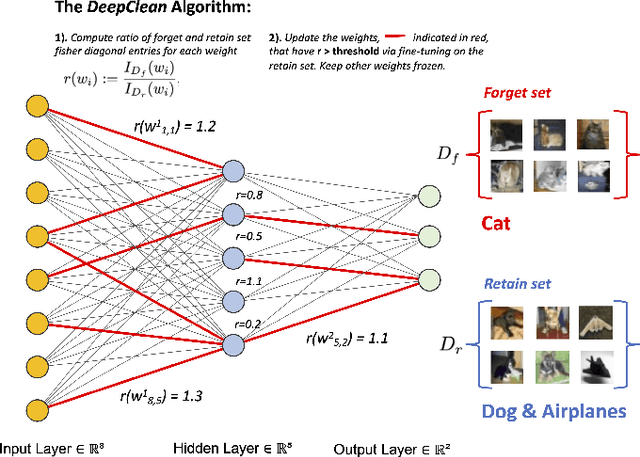
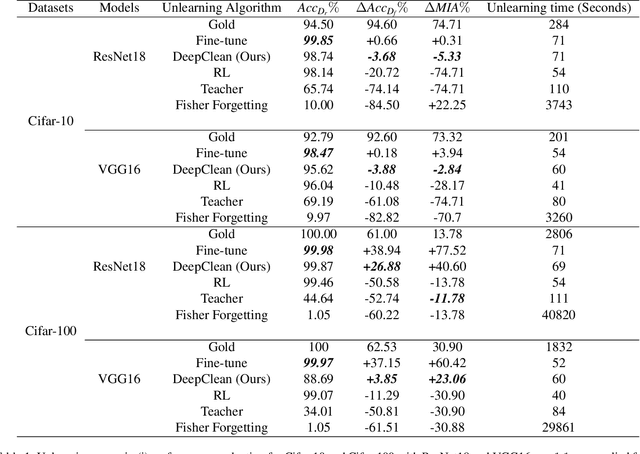
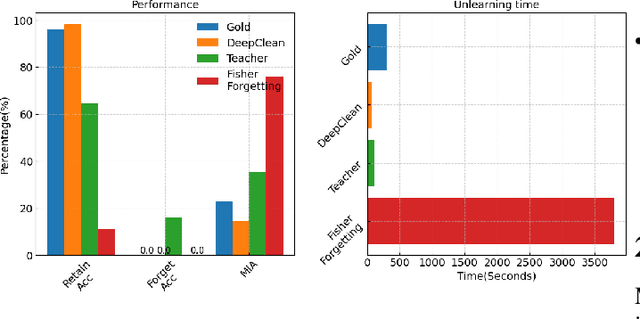
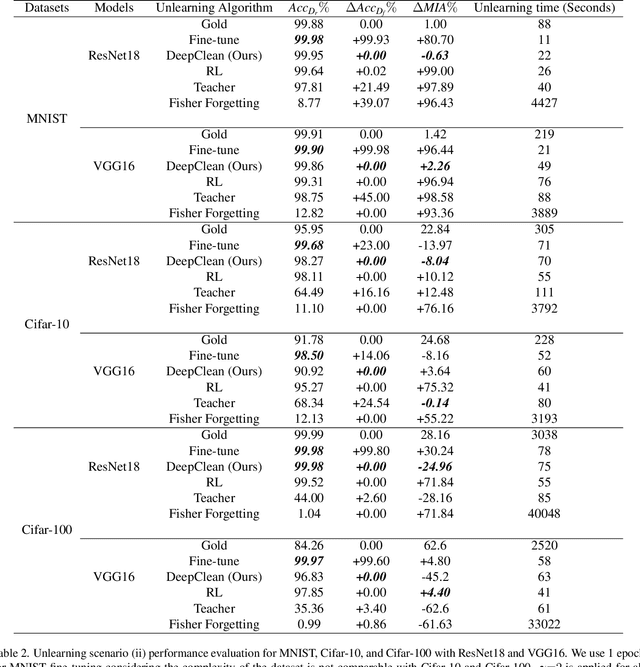
Abstract:Machine learning models trained on sensitive or private data can inadvertently memorize and leak that information. Machine unlearning seeks to retroactively remove such details from model weights to protect privacy. We contribute a lightweight unlearning algorithm that leverages the Fisher Information Matrix (FIM) for selective forgetting. Prior work in this area requires full retraining or large matrix inversions, which are computationally expensive. Our key insight is that the diagonal elements of the FIM, which measure the sensitivity of log-likelihood to changes in weights, contain sufficient information for effective forgetting. Specifically, we compute the FIM diagonal over two subsets -- the data to retain and forget -- for all trainable weights. This diagonal representation approximates the complete FIM while dramatically reducing computation. We then use it to selectively update weights to maximize forgetting of the sensitive subset while minimizing impact on the retained subset. Experiments show that our algorithm can successfully forget any randomly selected subsets of training data across neural network architectures. By leveraging the FIM diagonal, our approach provides an interpretable, lightweight, and efficient solution for machine unlearning with practical privacy benefits.
An Unsupervised Method for Estimating Class Separability of Datasets with Application to LLMs Fine-Tuning
May 24, 2023Abstract:This paper proposes an unsupervised method that leverages topological characteristics of data manifolds to estimate class separability of the data without requiring labels. Experiments conducted in this paper on several datasets demonstrate a clear correlation and consistency between the class separability estimated by the proposed method with supervised metrics like Fisher Discriminant Ratio~(FDR) and cross-validation of a classifier, which both require labels. This can enable implementing learning paradigms aimed at learning from both labeled and unlabeled data, like semi-supervised and transductive learning. This would be particularly useful when we have limited labeled data and a relatively large unlabeled dataset that can be used to enhance the learning process. The proposed method is implemented for language model fine-tuning with automated stopping criterion by monitoring class separability of the embedding-space manifold in an unsupervised setting. The proposed methodology has been first validated on synthetic data, where the results show a clear consistency between class separability estimated by the proposed method and class separability computed by FDR. The method has been also implemented on both public and internal data. The results show that the proposed method can effectively aid -- without the need for labels -- a decision on when to stop or continue the fine-tuning of a language model and which fine-tuning iteration is expected to achieve a maximum classification performance through quantification of the class separability of the embedding manifold.
Learning medical triage from clinicians using Deep Q-Learning
Mar 28, 2020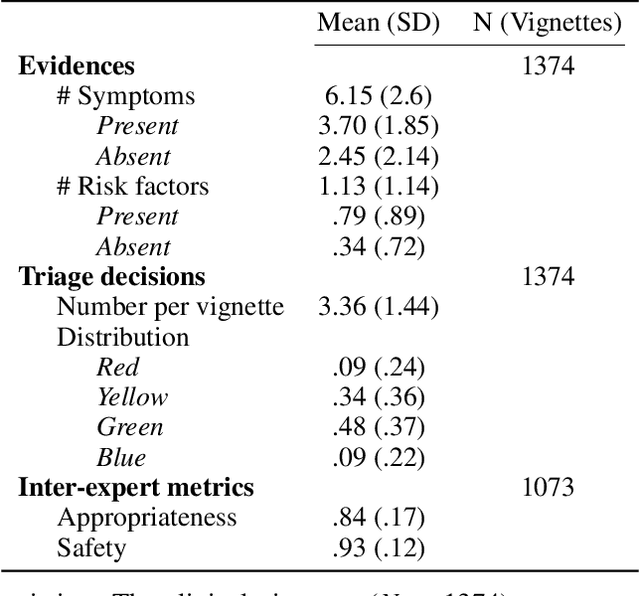
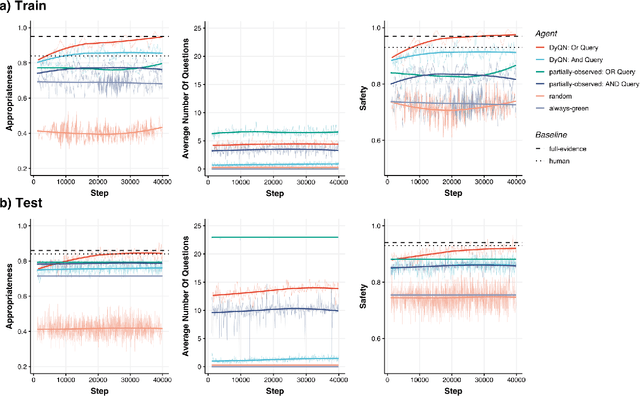
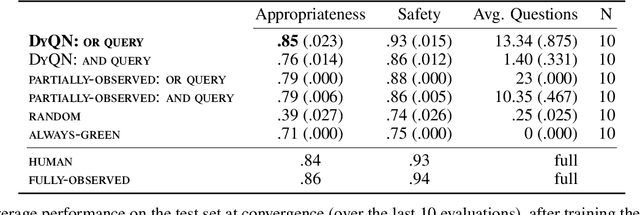
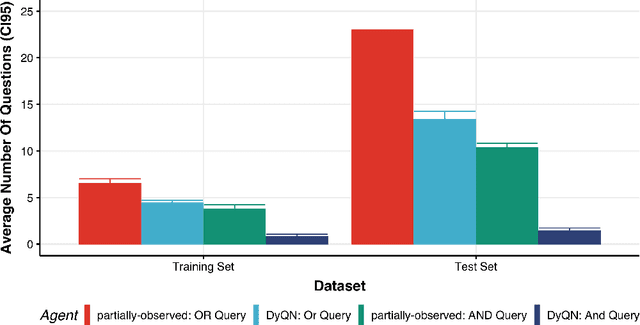
Abstract:Medical Triage is of paramount importance to healthcare systems, allowing for the correct orientation of patients and allocation of the necessary resources to treat them adequately. While reliable decision-tree methods exist to triage patients based on their presentation, those trees implicitly require human inference and are not immediately applicable in a fully automated setting. On the other hand, learning triage policies directly from experts may correct for some of the limitations of hard-coded decision-trees. In this work, we present a Deep Reinforcement Learning approach (a variant of DeepQ-Learning) to triage patients using curated clinical vignettes. The dataset, consisting of 1374 clinical vignettes, was created by medical doctors to represent real-life cases. Each vignette is associated with an average of 3.8 expert triage decisions given by medical doctors relying solely on medical history. We show that this approach is on a par with human performance, yielding safe triage decisions in 94% of cases, and matching expert decisions in 85% of cases. The trained agent learns when to stop asking questions, acquires optimized decision policies requiring less evidence than supervised approaches, and adapts to the novelty of a situation by asking for more information. Overall, we demonstrate that a Deep Reinforcement Learning approach can learn effective medical triage policies directly from expert decisions, without requiring expert knowledge engineering. This approach is scalable and can be deployed in healthcare settings or geographical regions with distinct triage specifications, or where trained experts are scarce, to improve decision making in the early stage of care.
Masking schemes for universal marginalisers
Jan 16, 2020
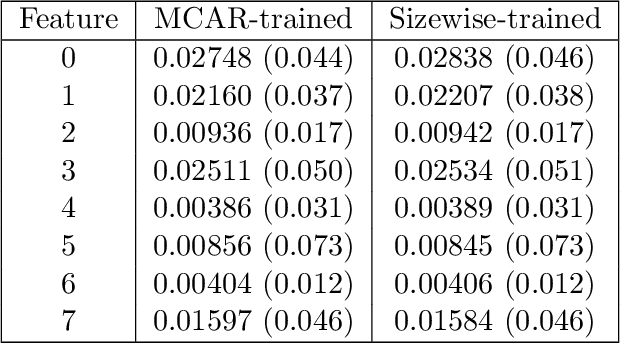

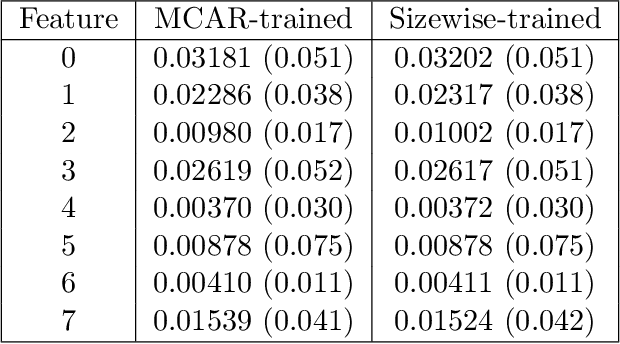
Abstract:We consider the effect of structure-agnostic and structure-dependent masking schemes when training a universal marginaliser (arXiv:1711.00695) in order to learn conditional distributions of the form $P(x_i |\mathbf x_{\mathbf b})$, where $x_i$ is a given random variable and $\mathbf x_{\mathbf b}$ is some arbitrary subset of all random variables of the generative model of interest. In other words, we mimic the self-supervised training of a denoising autoencoder, where a dataset of unlabelled data is used as partially observed input and the neural approximator is optimised to minimise reconstruction loss. We focus on studying the underlying process of the partially observed data---how good is the neural approximator at learning all conditional distributions when the observation process at prediction time differs from the masking process during training? We compare networks trained with different masking schemes in terms of their predictive performance and generalisation properties.
MultiVerse: Causal Reasoning using Importance Sampling in Probabilistic Programming
Oct 17, 2019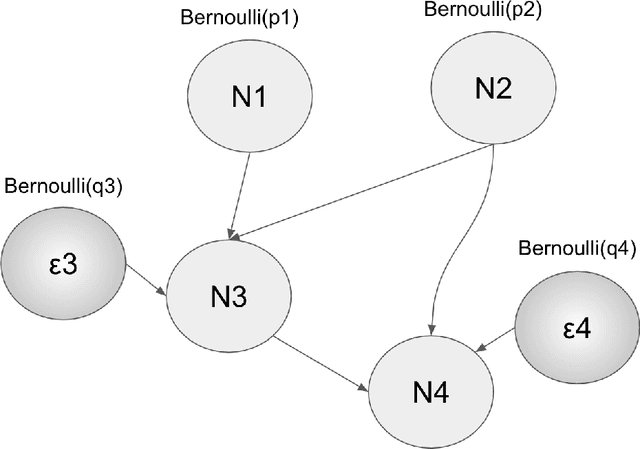
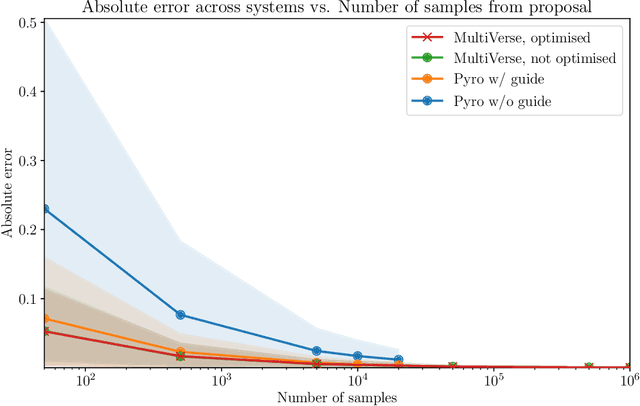


Abstract:We elaborate on using importance sampling for causal reasoning, in particular for counterfactual inference. We show how this can be implemented natively in probabilistic programming. By considering the structure of the counterfactual query, one can significantly optimise the inference process. We also consider design choices to enable further optimisations. We introduce MultiVerse, a probabilistic programming prototype engine for approximate causal reasoning. We provide experimental results and compare with Pyro, an existing probabilistic programming framework with some of causal reasoning tools.
Universal Marginaliser for Deep Amortised Inference for Probabilistic Programs
Oct 16, 2019

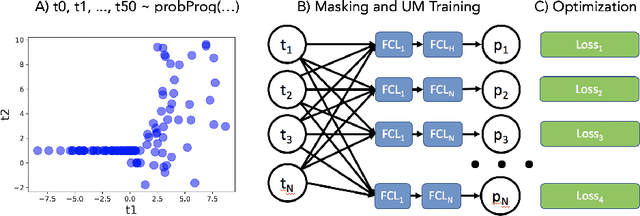
Abstract:Probabilistic programming languages (PPLs) are powerful modelling tools which allow to formalise our knowledge about the world and reason about its inherent uncertainty. Inference methods used in PPL can be computationally costly due to significant time burden and/or storage requirements; or they can lack theoretical guarantees of convergence and accuracy when applied to large scale graphical models. To this end, we present the Universal Marginaliser (UM), a novel method for amortised inference, in PPL. We show how combining samples drawn from the original probabilistic program prior with an appropriate augmentation method allows us to train one neural network to approximate any of the corresponding conditional marginal distributions, with any separation into latent and observed variables, and thus amortise the cost of inference. Finally, we benchmark the method on multiple probabilistic programs, in Pyro, with different model structure.
Universal Marginalizer for Amortised Inference and Embedding of Generative Models
Nov 12, 2018

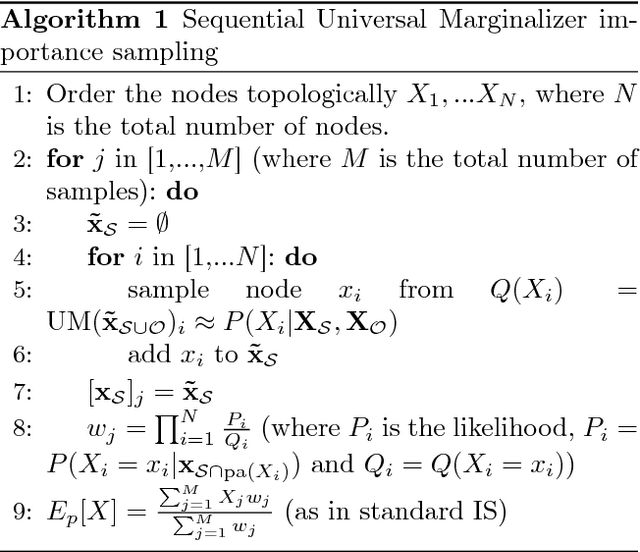

Abstract:Probabilistic graphical models are powerful tools which allow us to formalise our knowledge about the world and reason about its inherent uncertainty. There exist a considerable number of methods for performing inference in probabilistic graphical models; however, they can be computationally costly due to significant time burden and/or storage requirements; or they lack theoretical guarantees of convergence and accuracy when applied to large scale graphical models. To this end, we propose the Universal Marginaliser Importance Sampler (UM-IS) -- a hybrid inference scheme that combines the flexibility of a deep neural network trained on samples from the model and inherits the asymptotic guarantees of importance sampling. We show how combining samples drawn from the graphical model with an appropriate masking function allows us to train a single neural network to approximate any of the corresponding conditional marginal distributions, and thus amortise the cost of inference. We also show that the graph embeddings can be applied for tasks such as: clustering, classification and interpretation of relationships between the nodes. Finally, we benchmark the method on a large graph (>1000 nodes), showing that UM-IS outperforms sampling-based methods by a large margin while being computationally efficient.
 Add to Chrome
Add to Chrome Add to Firefox
Add to Firefox Add to Edge
Add to Edge